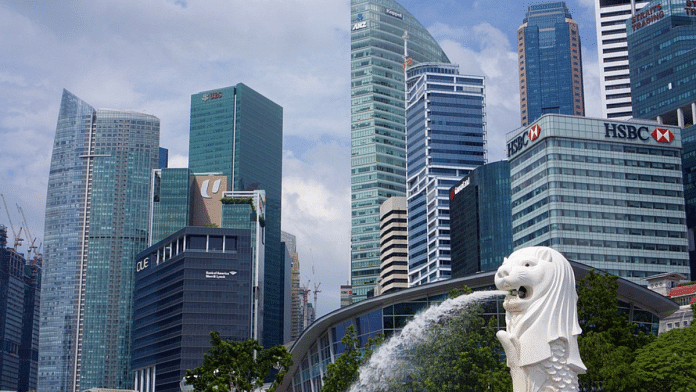Singapore is taking the “waste” out of its wastewater by turning sewage into safe, clean drinking water using an advanced filtration and treatment system.
The Changi Water Reclamation Plant forms the core of the system, with capacity to treat up to 900 million litres of wastewater daily – roughly equivalent to the water held by 350 Olympic swimming pools.
Land is in short supply in Singapore, because it is an island state, so much of the treatment system operates below ground. It reaches as far as 25 stories deep in places through an expansive network of tunnels, pipes, tanks, filtration equipment and other infrastructure.
Wastewater from sewers arrives at the plant through 48 kilometres of connected tunnels, where it is filtered and pumped to the surface. Bacteria, viruses and other impurities are then removed, first using a high-tech filtration system, then using ultraviolet rays to disinfect the water. The result is known as “NEWater”, which is clean, safe and drinkable.
Once treated, the water is used extensively by industries like the island’s large microchip manufacturing sector, which is heavily water dependent. It’s also put to work in the cooling systems that regulate temperatures in the numerous tall buildings that dominate the skyline – temperatures in Singapore are rising at twice the rate of the world average. And some treated water is used to top up reservoirs of drinking water, which can evaporate in the intense heat of the dry season.
Water stress: A global challenge
Despite being surrounded by seawater, Singapore is one of the most water-stressed countries in the world when it comes to drinking water.
With few freshwater resources of its own and limited land for reservoirs, the government relies heavily on output from desalination plants and imported drinking water from neighbouring Malaysia.
Singapore is one of a growing number of countries facing the threat of water stress. The climate crisis is increasing the number and intensity of extreme weather events like droughts. With the global population also set to hit 9.9 billion by 2050, this is putting unsustainable pressure on the planet’s scarce water resources.

Almost a quarter of the global population has no access to safe drinking water. Image: Our World in Data
More than 25% of the global population already has no access to safely managed drinking water, as defined by the World Health Organization and UNICEF. Think about that percentage for a second – that’s one in every four people.
Water access for all
The threat of water stress differs between regions and national income levels. While 98% of people living in high-income countries have access to a safe, uncontaminated supply of water on tap, this figure drops to 30% in Sub-Saharan Africa. And in low-income countries, almost 6% of people depend solely on surface water to drink – that’s any body of water above ground, including streams, rivers and lakes.
An estimated 2 billion people – 26% of the global population – live in water-stressed countries, according to UN Water.
UN Sustainable Development Goal 6 aims to ensure access to safe drinking water and sanitation for all by 2030. While progress is being made, more action is needed as the world is not on track to achieve this goal.
It’s important to recognize that there is no single solution to the differing challenges facing water-stressed countries.
High-tech water treatment systems like the one in Singapore can help in some developed countries, but these methods may not be suitable or affordable for many developing nations. The World Bank says there is a need for smart investment in clean water and sanitation solutions to help plug the gaps in global access to these essential resources.
Johnny Wood is Senior Writer, Formative Content
This article was first published in World Economic Forum. You can read the article here.
Also read: In a historic first, rich countries will pay for losses and damages caused by climate change



